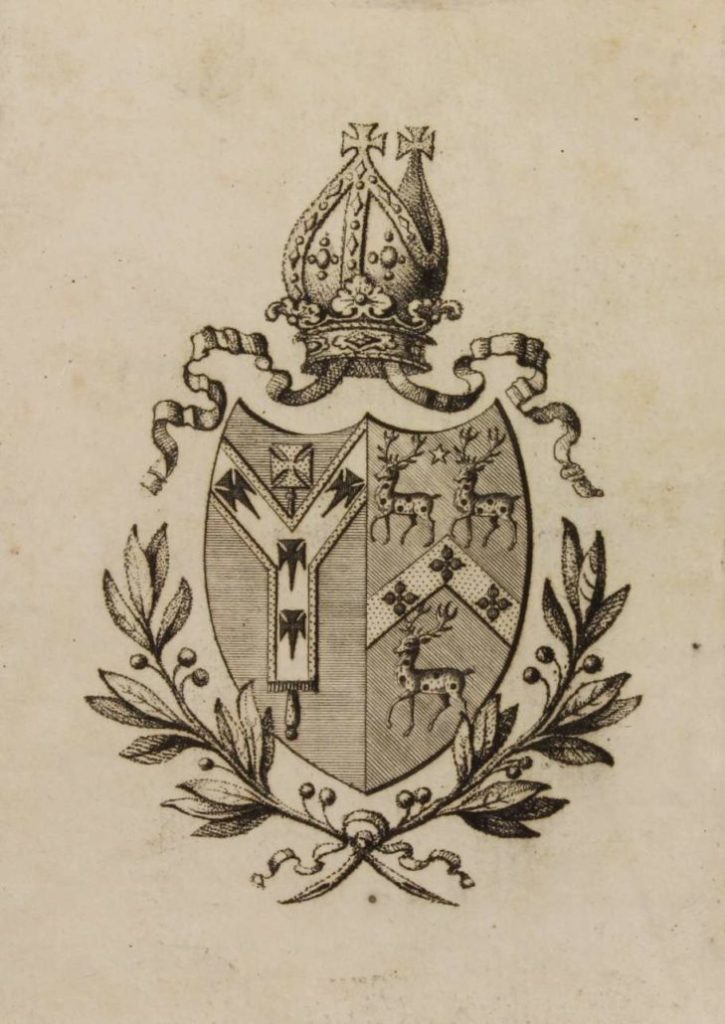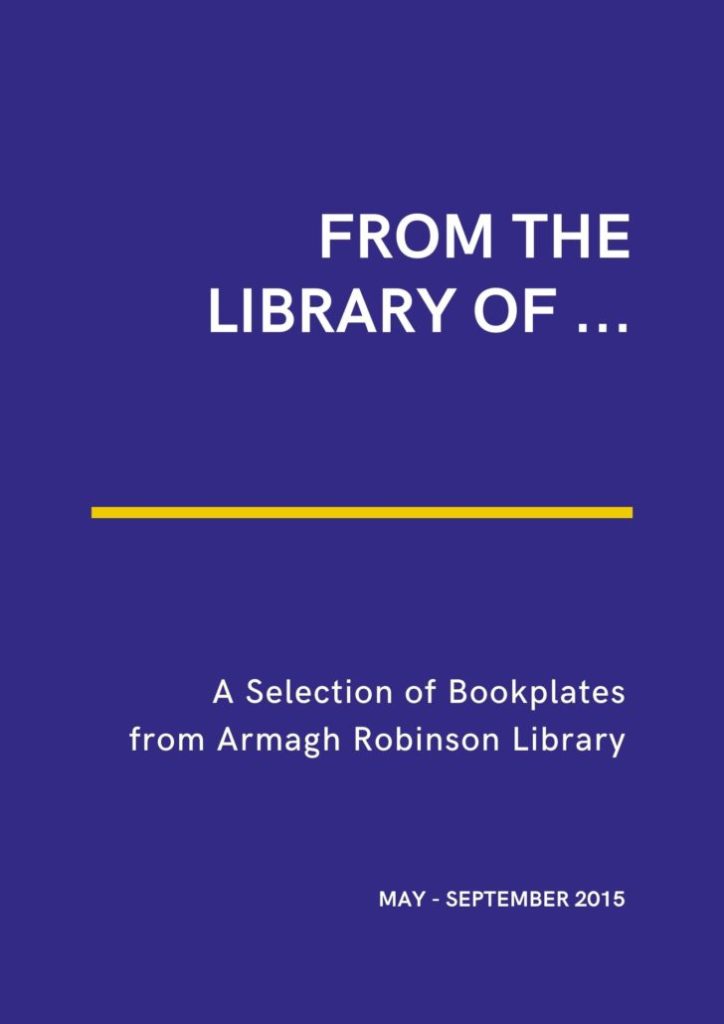
Bookplates, or ex libris, are printed labels pasted on the inside cover of a book to display its ownership, especially in private libraries.
This exhibit shows bookplates in books that belonged to people with links to the Library, or to Armagh.
Armagh Robinson Library has collected books from many different collections since its foundation in 1771. A wide range of bookplates can be found in the collection.
The first printed bookplates were produced in 15th century Germany, following the invention of the printing press. However, it was not until the end of the 17th century that bookplates became popular in Great Britain and Ireland.
Those early bookplates contain some or all heraldic elements from an armorial achievement. This is indeed the case for most the bookplates right up to the 19th century.
The elements of an armorial achievement can reflect family origins and professions, as well as personal characteristics.
Carolian Style 1650-1700
In the middle of the 17th Century, the Carolian style bookplate emerged. It often consisted of a coat of arms surrounded by wreaths or palms.
Early Armorial 1690-1720
The Early Armorial style bookplate consists of a coat of arms, surrounded by drapery (mantling) coming down from a helmet.
The coat of arms in this bookplate probably belongs to the Jackson family of Ballybay. The Ballybay Jacksons founded the linen industry in that area.
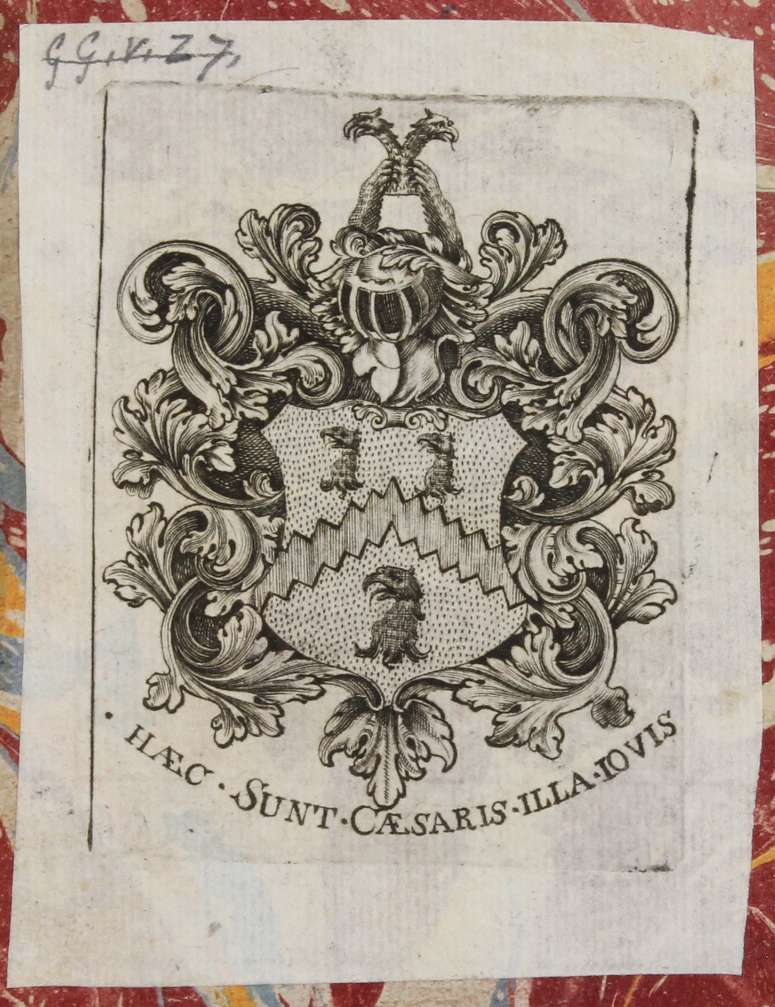
OWNER Jackson Family, probably the Jacksons of Ballybay Volumes in Armagh Robinson Library with the Jackson bookplate: at least 32
Jacobean Style 1700-1745
In the early 18th century the so-called Jacobean armorial became popular. This type of bookplate consists of a symmetrical frame, also with mantling. However, this mantling was less exuberant than in the Early Armorial style.
The bookplate is sometimes decorated with shells, cherubs’ heads and animals. A distinctive feature in some of the Jacobean armorial bookplates is a horizontal plinth below the shield.
John Rawdon, 1st Earl of Moira, was known as The Lord Rawdon between 1750 and 1762. He was a descendant of George Rawdon (1604-1684). George Rawdon worked as estate manager for Viscount Edward Conway at Lisnagarvey House, Brookhill.
Viscount Conway kept his Irish book and manuscript collection at the Library at Lisnagarvey. Part of the collection and the handwritten catalogue were passed down to several generations of the Rawdons. The catalogue and some sixty volumes from the Conway collection are now held by Armagh Robinson Library.
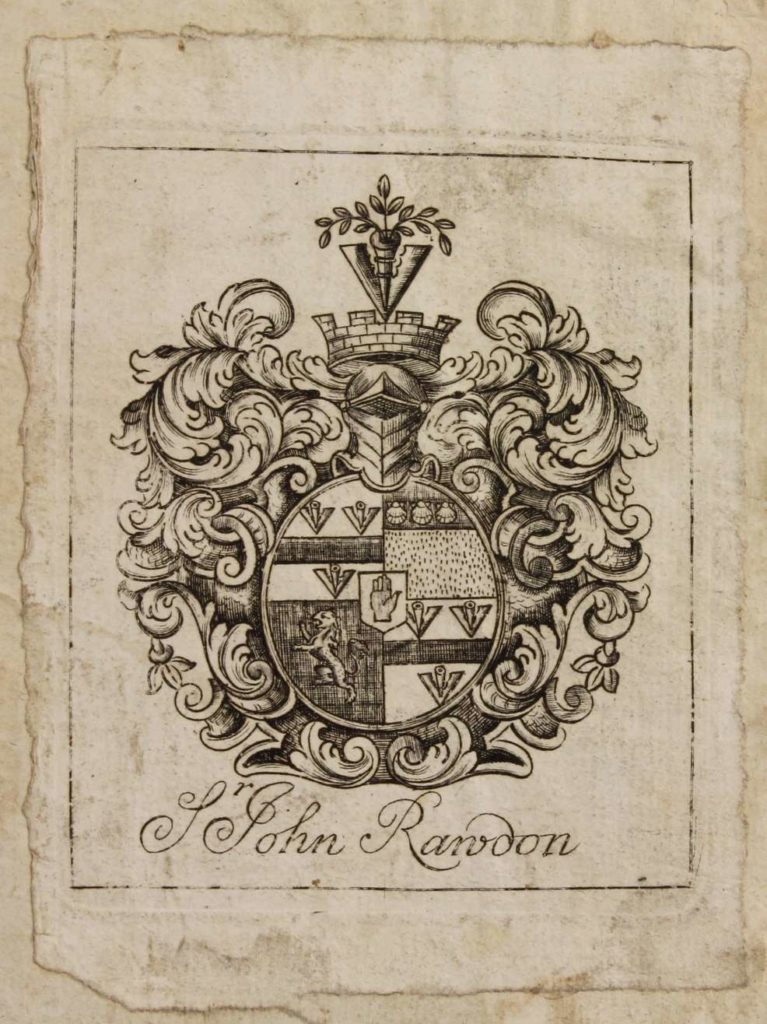
OWNER John Rawdon, 1st Earl of Moira Volumes in Armagh Robinson Library with the Rawdon bookplate: at least 43
John Huson, a Dublin Barrister, was an avid book collector. His library contained books on subjects such as law, general history, Irish history, theology, travel, and gardening.
After his death in 1737 his library was auctioned at the Parliament House in Dublin.
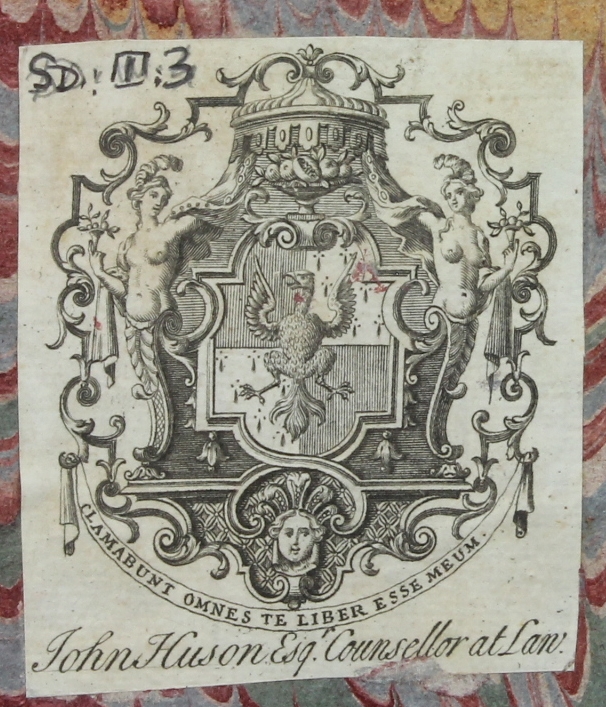
OWNER John Huson Volumes in Armagh Robinson Library with the Huson bookplate: at least 8
Chippendale Style 1740-1780
The Chippendale armorial style emerged in the middle part of the 18th century. It was created under the influence of French Rococo and the furniture designs by Thomas Chippendale.
These bookplates are characterised by an asymmetrical shield, a frame of shell shapes, surrounded by leaves and flowers. Often other elements were added, such as books, cherubs, animals and objects reflecting the book owner’s profession.
Michael Ignatius Dugan was a book and manuscript collector, as well as an auctioneer in Dublin.
His collection passed to Dr John Lodge, an English archivist and historian, and the father to the Library’s first Keeper William Lodge. The Dugan collection remained in the Lodge family until 1865. In that year the Library purchased it for its collections.
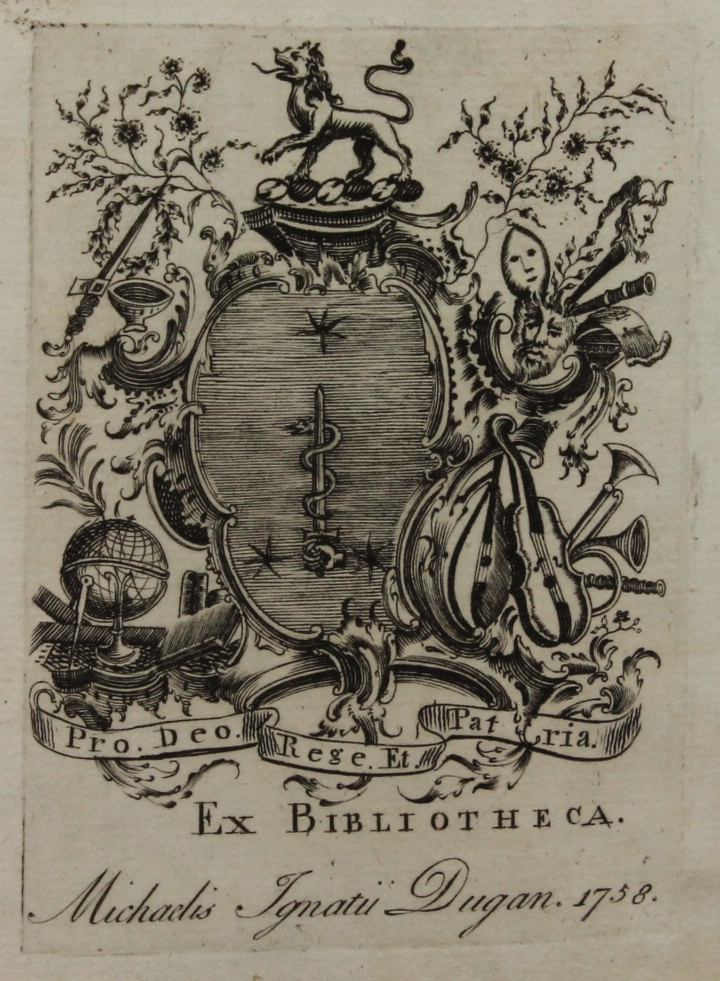
OWNER Michael Ignatius Dugan Volumes in Armagh Robinson Library with the Dugan bookplate: at least 23
Festoon, Wreath and Ribbon Style, or Spade Shield Style – 1770-1810
By 1770 Rococo had gone out of fashion, and bookplate styles became much more controlled.
The main element of this new style is the spade shield. This could be displayed
- on its own,
- with a festoon (swags of flowers, leaves or husks, hanging down from pins or ribbon) over it,
- with wreaths tied together below it,
- or with both.
Richard Robinson became Archbishop of Armagh in 1765. In this capacity he was responsible for the creation of many buildings in Armagh. These include the Infirmary, the Gaol, the Palace, the Royal School, the Observatory and this very Library.
His collection contained books on theology, philosophy, classical and modern literature, travels, history, medicine and law. This collection became the foundation of Armagh Robinson Library. Both his bookplates can be found in numerous volumes in the collection. A mitre was added to his original bookplate after his installation as Archbishop.
OWNER Archbishop Richard Robinson Volumes in Armagh Robinson Library with the Richard Robinson bookplate: at least 174 Volumes in Armagh Robinson Library with the Archbishop Robinson bookplate: at least 2,742
John Freind Robinson was the nephew of, and the heir to Archbishop Richard Robinson, founder of Armagh Robinson Library.
He also served as Archdeacon of Armagh from 1786 until his resignation in 1797.
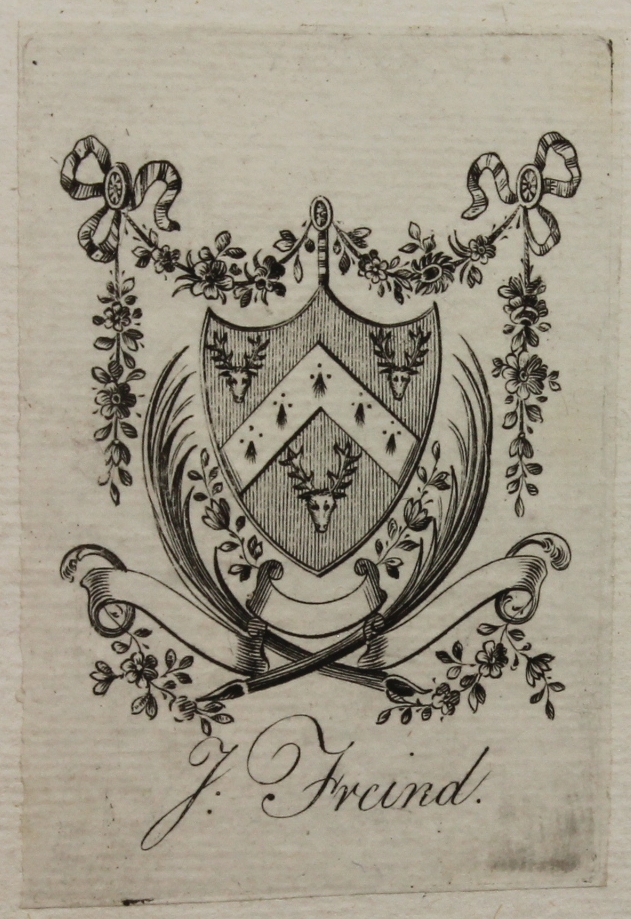
Owner: John Freind Robinson Volumes in Armagh Robinson Library with the Freind bookplate: at least 2


